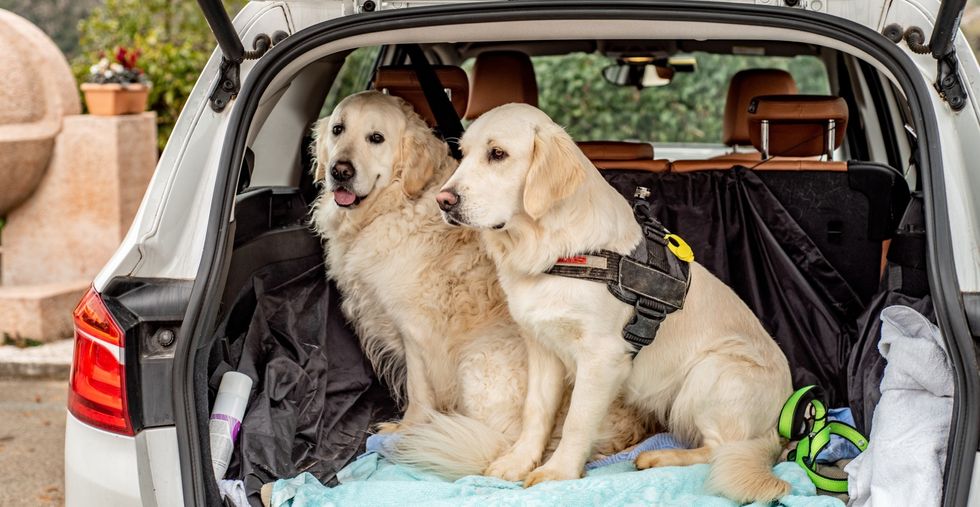Experts are warning Britons that they could be fined up to £5,000 for travelling with their pets on the road this summer.
Under Rule 57 of the Highway Code, when in a vehicle, drivers must make sure dogs or other animals are suitably restrained with a seatbelt harness, pet carrier or cage for the whole duration of travel.
This has become more crucial as the summer break gets underway with many families hitting the road for staycations.
According to new research, one in five drivers are unaware they could be fined for travelling with a pet on their lap.
Do you have a story you'd like to share? Get in touch by emailingmotoring@gbnews.uk
Under Rule 57 of the Highway Code pets must be restrained while travelling
GETTY
Richard Evans, head of technical services at webuyanycar, explained that many drivers will not know that rules for carrying pets in the car exist.
Data from the brand found that 70 per cent of Brits are planning a UK-based holiday this year, many of whom will be travelling with their pets.
He said: “It’s a legal requirement to use a pet restraint when driving and the Highway Code states that when travelling drivers should either use a restraint or seat belt, a cage/carrier or have a safety guard in the boot of the car.
“If a driver is caught with their pet unrestrained, they could face points on their licence and a fine for driving dangerously.”
The Highway Code states that when in a vehicle, dogs or other animals must be safely restrained at all times.
Automotive experts at Bristol Street Motors added that although having a pet in a car is common, with many dogs hanging their heads out of car windows, it could result in driving fines.
The spokesperson explained that the restraints help prevent distraction or injury to the person driving.
“Even on the quietest of roads, drivers could face a significant fine of £5,000, as well as penalty points on their licence, for letting their pets rest out the window,” they warned.
Offering advice, Bristol Street Motors highlighted the importance of seatbelts for pets and how useful they can be to avoid getting fined.
“You wouldn’t allow an ordinary passenger to ride in your car without their seat belt on and the same applies to your dog too,” the experts remarked.
Richard Evans also noted that having a proper restraint in a car is an important safety measure for everyone on the road, including pets.
He said: “Our guide on driving with pets will help drivers stay aware of all the items they might need to keep their pets safe when on the road.”
LATEST DEVELOPMENTS:
 Dogs should never be left unattended in vehiclesGETTY
Dogs should never be left unattended in vehiclesGETTYThe People's Dispensary for Sick Animals suggested that to help pets cope better with long journeys in cars, drivers should introduce them to vehicles from a young age.
However, the charity cautioned how pets could knock their head, fall out of the window, be injured by stones kicked up by the tyres, or distract other drivers if they are sticking out of the window.









